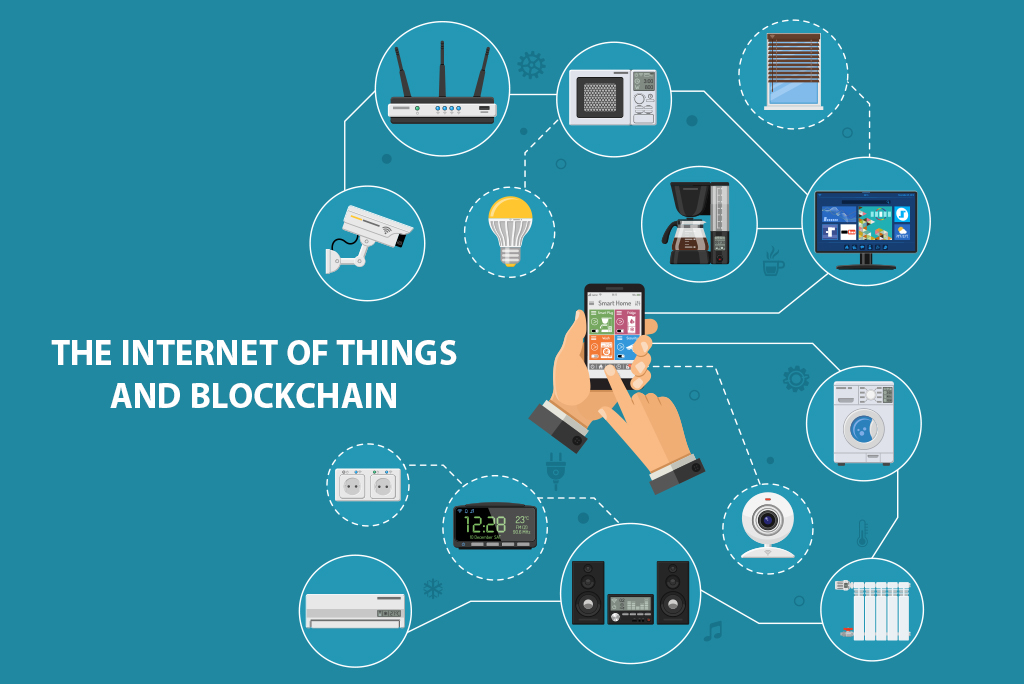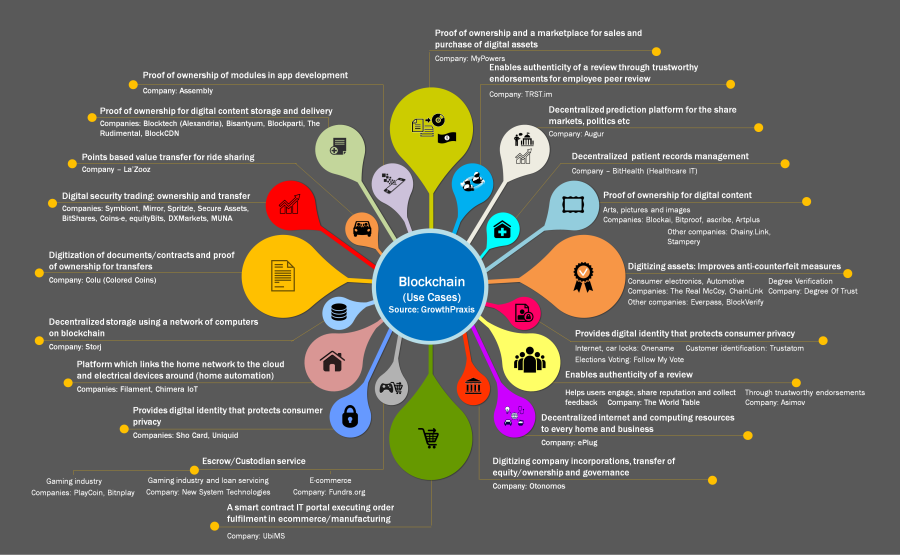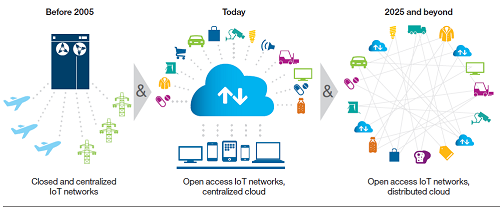
Blockchain in IoT Development – Benefits & Challenges
There was the 1st computer in 1944, 1st mainframe in 1954, 1st minicomputer in 1964, 1st PC in 1974, Macintosh in 1984, the Web with Netscape in 1994, social networks in 2004; and now technology has revolutionized to the Internet of ME with Blockchain of Things – BoT.
Internet of Things (IoT) is the next level of automation for each single object a person can utilize in real life. It makes more and more things digitalized every day. In very near future, billions of connected devices will be blowout across smart cities and smart homes globally. This swift evolution of the IoT market has triggered an explosion in the variation of IoT services, which generates actual challenges. The main need is about the security – a secure IoT model that perform regular tasks such as communication, storage, procedures, etc.
Gartner’s report categorizes IT spending into five different types – data center systems, enterprise software, devices, IT services and communications services. The last section will be the highest-grossing by collecting more than $1.4 trillion as per Gartner’s prediction; however, enterprise software costs will see the maximum progress at a 9.5%. Overall, Gartner is also hoping for the growth to continue in 2019.
Issues occurred when it’s a centralized model
The biggest challenge is centralization of a model. Every device is connected and verified through a cloud server. Connections among devices will have to go through the cloud. This structure is now not able to respond digitalized needs of giant IoT systems.
Nowadays IoT solutions are very costly as there is a high infrastructure and maintenance cost connected with central clouds as well as networking equipment.
There are different owners for different devices. So, their subsidiary cloud infrastructure makes machine-to-machine communications challenging. There is no any single platform that links all devices and no guarantee about cloud services delivered by different producers are fully compatible.
This centralized structure can face serious performance issues as many devices in the network boost. Then server would be slow down and disturb the overall performance of all IoT devices.
Decentralization of IoT Networks
A decentralized tactic for IoT network can solve many queries. Adopting a peer-to-peer approach to process number of transactions among devices will meaningfully reduce costs related management of big centralized data. It also deals with calculations and storage requirements across billions of devices that create IoT networks. This prohibits an entire IoT network from failure and uncertain breakdown.
Devices can communicate in a distributed manner and ensure security as well as integrity without any centralized dependency. There is no need of middle man and no worries about spoofing of devices.

When IoT meets Blockchain Model
The Blockchain is a digitized technology that creates a distributed digital ledger of transactions publicly between different nodes of a network rather being stored on a centralized server.
Blockchain allows devices to share the same network without the requirement of any extra resources that ultimately save time and costs when it comes to IoT field. It also delivers solutions to the issue of conflict authority among several retailers and vendors. It offers a truth that can not be altered and hacked by anyone.
Blockchain has application in almost each single vertical nowadays as businesses are all about secure transactions. The blockchain is really useful to store contracts with great security.

Benefits of Blockchain Technology in IoT
Blockchain has the potentiality to endorse this common economy based on machine-to-machine interactions. There are various auspicious developments on the ground of IoT, made all more stimulating and maintainable with the blockchain technology implementation.
- Blockchain will enable the monetization of information, where IoT device owners can sell data produced from IoT sensors for crypto currency.
- Any activity can be chased and evaluated by anyone who is authorized to connect to the IoT communication network.
- If something goes wrong, then the blockchain makes it easy to find the weak connection and you can take immediate action.
- Removing the cloud from IoT ecosystem saves a lot of money, specifically for governments as well as enterprises.
- The utilization of encrypted as well as distributed storage means data can be trusted by all parties engaged in the network chain.
- Machines will store transactions data securely without any need of middle man.
- Without giving write-access to the blockchain, no one can able to overwrite the record with inappropriate information.
- Blockchain does not bear with scalability subjects and empowers management of a large number devices.
- The facility of “smart contract” provided by Ethereum, enables the forming of agreements that will be implemented when conditions are met.
- Blockchain delivers the potentiality to enhance the overall security of the IoT environment.
- Data can be protected by some of the strongest encryption standards existing.
- Devices can love a more robust ecosystem to communicate. Even if any part of the network gets conceded, the attacker would not be able to regulate every device.
The IoT Future with Blockchain
Right now, IoT is all about collecting data, remote monitoring as well as automation of devices. If we talk about the evolution, it comprises a network of independent devices that interrelate with each other and make a smart decision without any human participation.
Blockchain has the ability to support this on the basis of peer-to-peer interactions. Blockchain will also permit the monetization of data through which IoT device holders can sell data created from IoT sensors for the cryptocurrency. Here the purpose is to simplify investment into renewable energy sources. Then energy formed by IoT equipment produces income in the form of cryptocurrency that is enumerated on the blockchain.
Summing up
Blockchain delivers auspicious benefits to the IoT ecosystem. It illustrates how IoT and blockchain in a much comprehensive view would deliver potentialities that make today’s key areas of focus look like superannuated applications.
